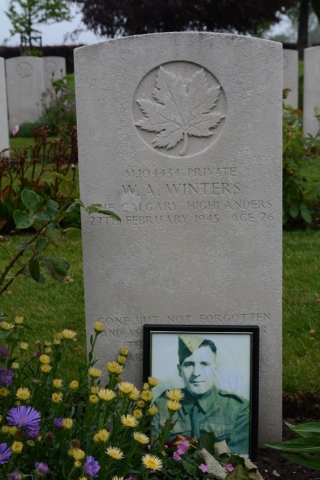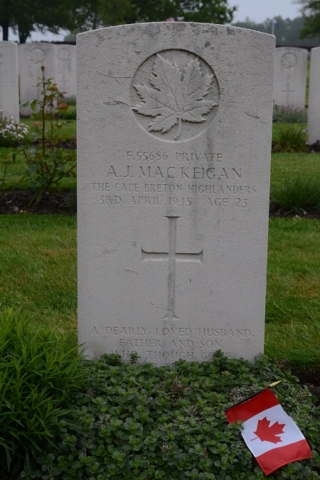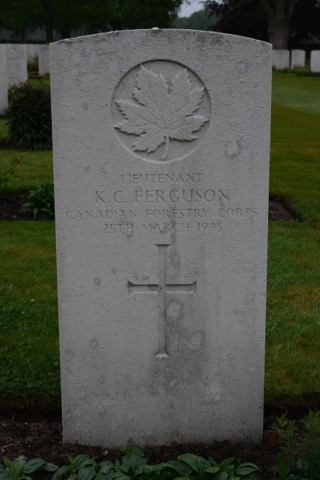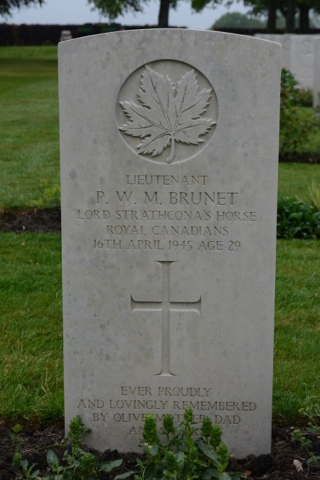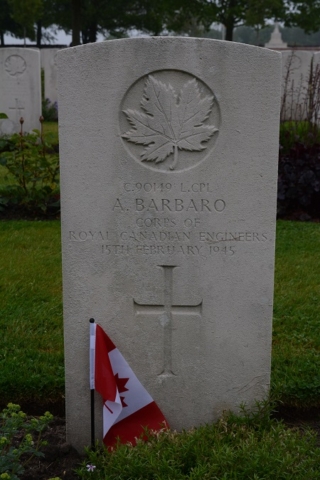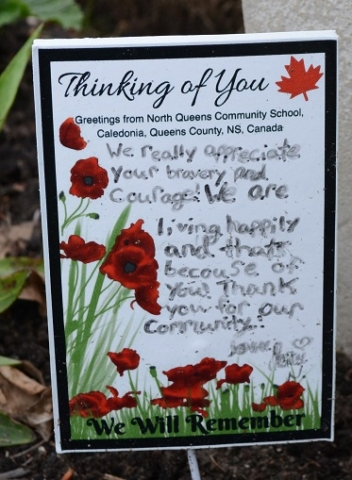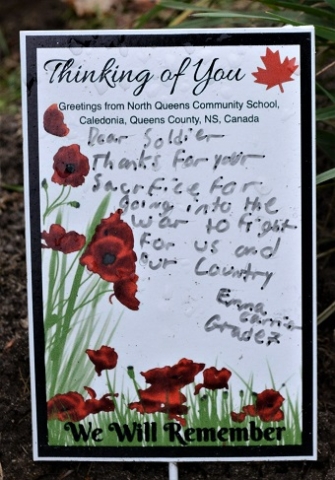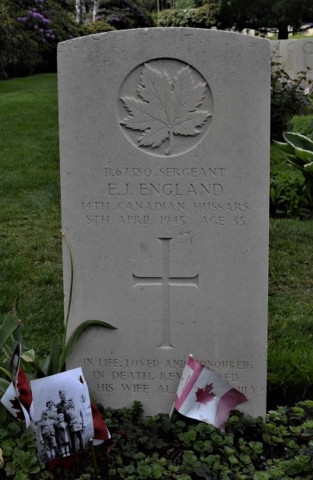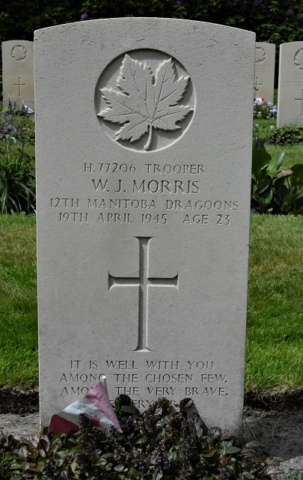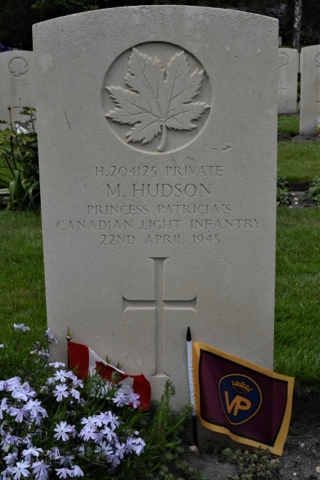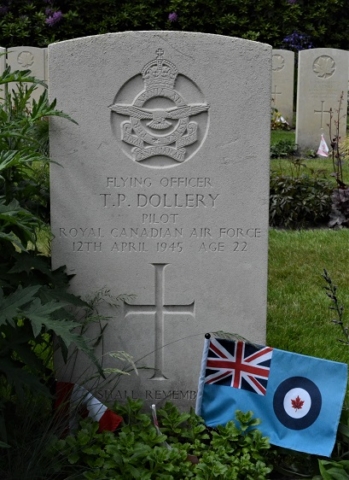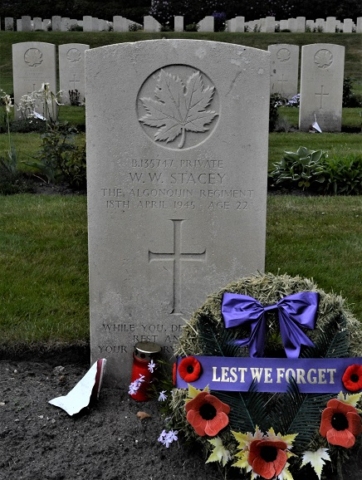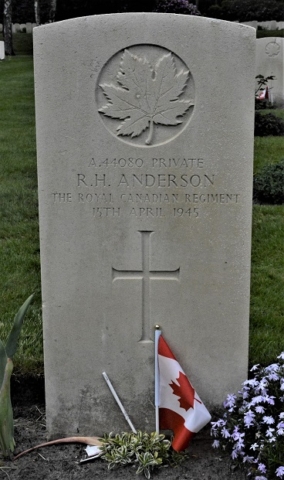We travelled by train from Bergen Op Zoom to Nijmegen.
After securing the Scheldt, the Canadian’s next objective was to liberate the rest of the Netherlands. They spent the winter mostly in static positions, resting, repairing their equipment and getting ready for the next phase of the war. By the spring of 1945, the Canadian army was on the move again, heading east across the Netherlands. Now 450,000 soldiers strong, they set out to kick the Germans out of the country.
The Canadians liberated Amsterdam, Rotterdam, The Hague, and countless little villages. As they advanced, they left behind a trail of food, fuel and medical supplies after a winter of starvation under German occupation. About 18,000 Dutch people starved to death in the winter of 1944/45. The German forces in the Netherlands surrendered to the Canadians on 5 May 1945.
The Liberation of the Netherlands cost Canada the lives of 7,600 soldiers and airmen.
Almost 206,000 Dutch citizens died during the occupation, including 18,000 of starvation, 12,000 of exhaustion, cold and disease, and 107,000 holocaust victims.
Groesbeek Canadian War Cemetery
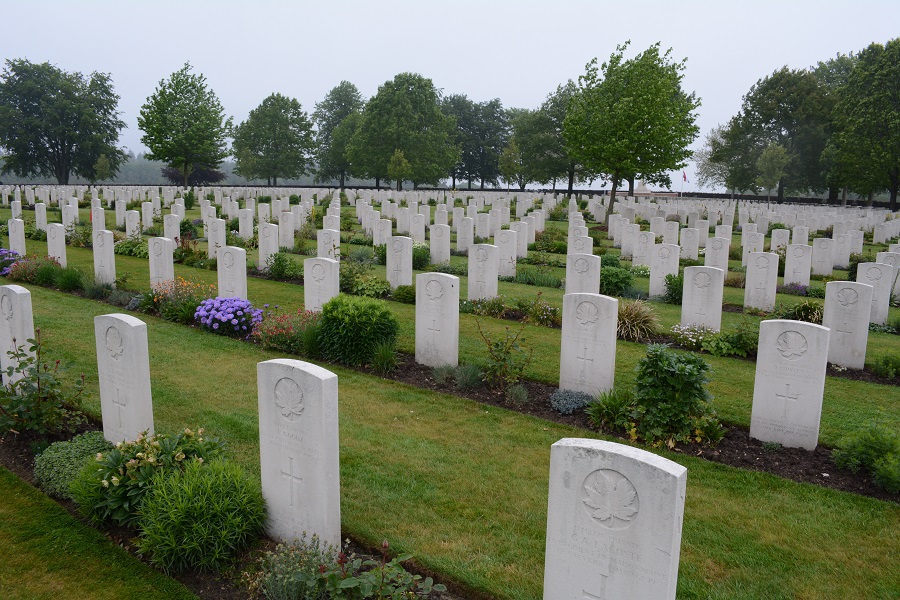
This cemetery contains 2,619 graves, of which 2,338 are Canadian. The soldiers died in the Liberation of the Netherlands and from Battles in Germany. Groesbeek is very close to the German border. Therefore, the Canadian commander, General Crerar, ordered that no Canadian soldiers were to be buried in Germany.
The Groesbeek Memorial
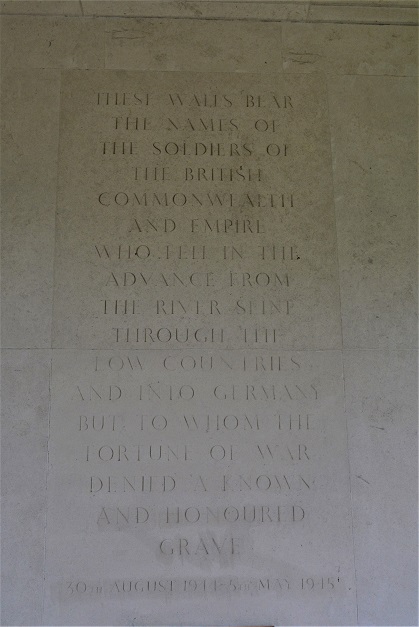
Within the cemetery are two walls, one on either side of the entrance, engraved with the names of an additional 1,016 soldiers who have no known grave.
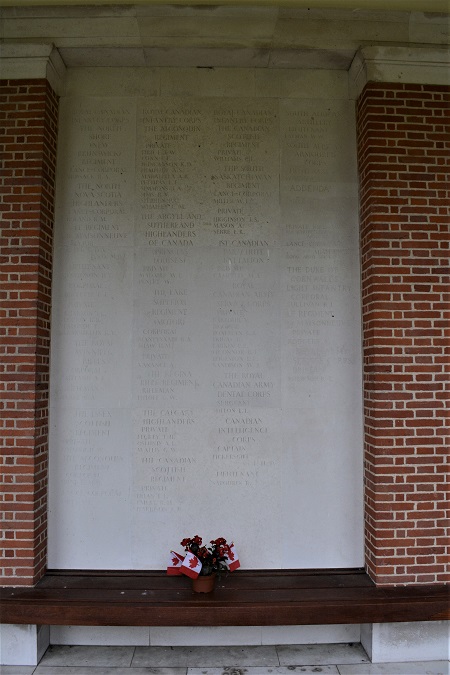
This is just one panel of names on the two walls of the memorial.
The Graves
Many people visit the cemetery and place things on the graves. Family from Canada often search out the grave of a loved one and put something on it, such as candles, small personal items, flowers, Canadian flags, letters and often photographs such as the one on the grave of W.A. Winters shown above. School children often write notes to the soldiers, as shown above. Here at Groesbeek, the local people also put candles on every grave at Christmas, as they do in Bergen Op Zoom. (Click the first photo to enlarge, then scroll through them).
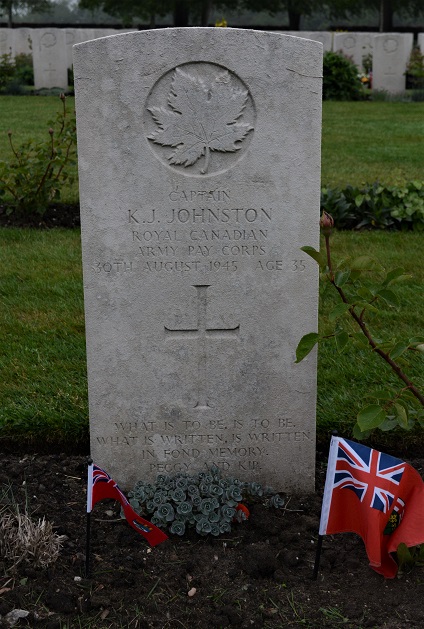
Almost every regiment and corp is represented at Groesbeek as several of the Royal Canadian Air Force. There are graves from parts of the army that you would not expect to become casualties of, such as the one from the Forestry Corp (photo above) or the Royal Canadian Army Pay Corps. One would think that a paymaster would be a reasonably safe job, but this shows that no one in a battle zone is safe, including chaplains, medics, and all other non-combat troops.
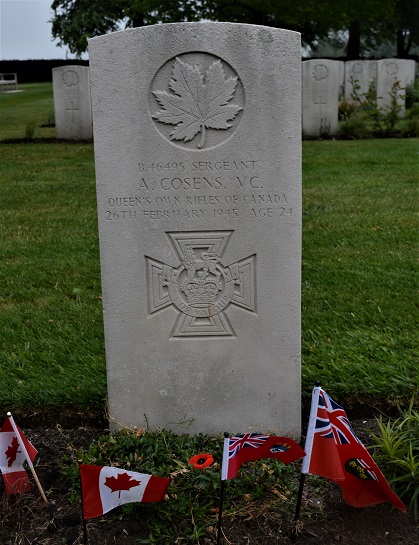
Aubrey Cosens was awarded the Victoria Cross posthumously for his bravery. During a battle in Germany, his platoon commander and all but four other soldiers were killed. Cosens took command of the four remaining soldiers and got them to provide cover while he advanced alone. After ordering a tank to ram a building where the Germans were hiding, he killed 22 Germans and took the remainder prisoner. Then did the same with two more buildings. Cosens was shot and killed by a sniper while returning to report what he had done. He was his parent’s only child.
Faces to Graves
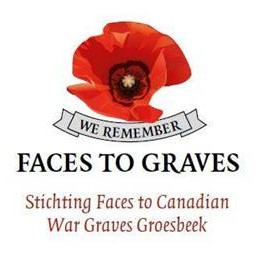
While I was at the Canadian cemetery at Groesbeek, I saw a group of young people researching the graves. I met one lady and asked what they were doing. She told me about Faces to Graves and kindly gave us a ride back to town.
The people were students from Canisius College in Nijmegen. First, they would gather around a grave and one person who had researched that soldier would tell his life story. Then, they held a minute of silence and laid some flowers on the grave. Then they moved on to another grave where another student had done the research.
Faces to Graves is a group in the Netherlands researching the Canadian soldiers buried at Groesbeek. They think people should know more about the soldiers who gave their lives to liberate their country than just the information inscribed on the tombstone.
They try to find a photo of the soldier and background information about him, such as where he was born, if he was married or had children, etc. In other words, a short biography so that he will be more than just a name on a tombstone. This will also generate the public’s interest so that the soldiers will not be forgotten. The stories are then published in various newspapers throughout the Netherlands and Canada.
They collect information from the Library and Archives Canada website and family members who can add personal details.
This will be a huge task as there are 2,338 Canadian graves plus 1,016 names on the walls of soldiers who do not have a grave.
Here is a link to their website to learn about Faces to Graves.
If you have family buried at Groesbeek, you should contact them and send them a photo and some information about your loved one. Anyone can send them a donation.
We made the short trip by train from Nijmegen to Arnhem
Holten Canadian War Cemetery
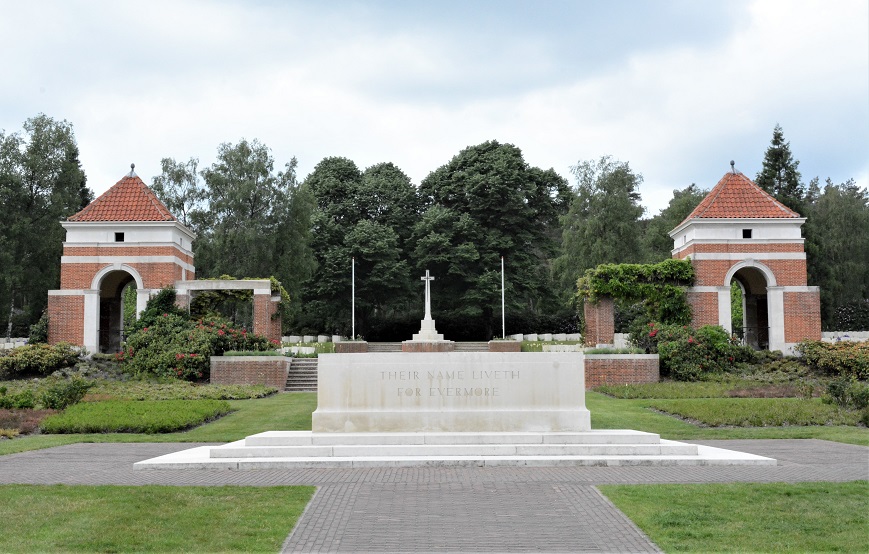
As the Canadians liberated the western Netherlands and the Nijmegen and Arnhem area, the army moved further south and west to liberate the remainder of the Netherlands and into Germany. However, as they travelled further west, it became too far to bring the dead soldiers back to Nijmegen, so a new cemetery was required. Thus, the Holten cemetery was created.
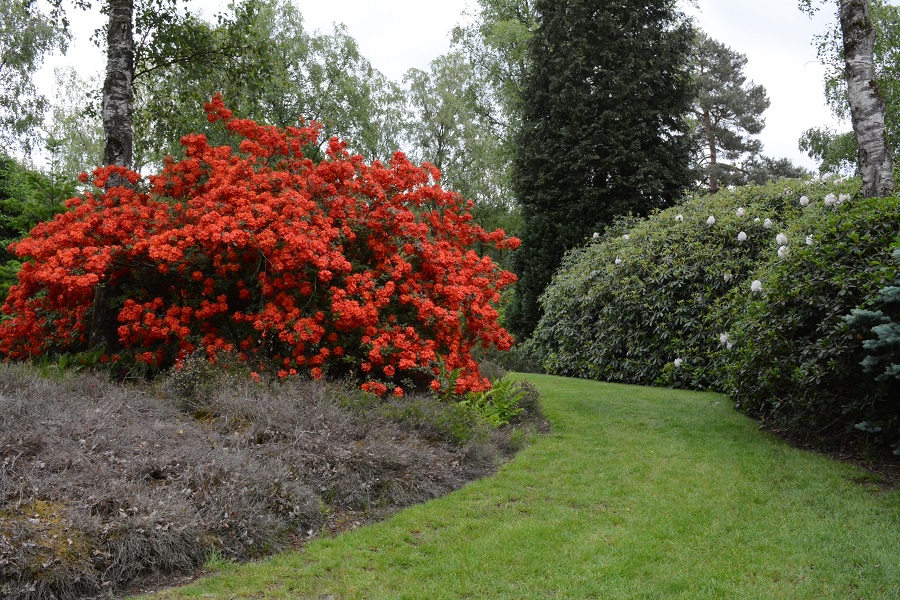
The CWGC cemeteries are well kept, but the one at Holten is perhaps the prettiest. A beautiful garden with flowering bushes surrounds it. Aside from Tyne Cot Cemetery at Passchendaele, Holten is the only other one that I know of that has a visitor centre and toilet facilities.
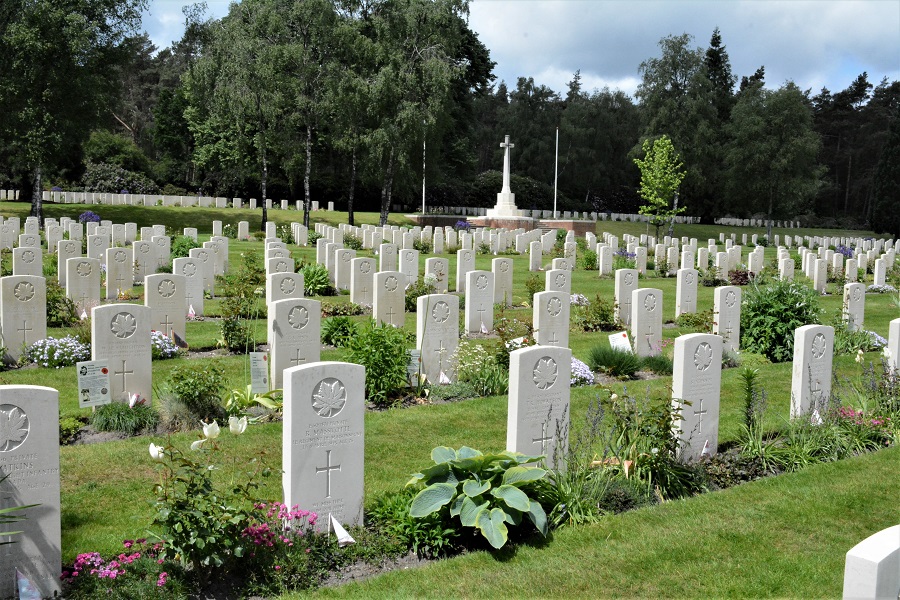
The Holten Canadian War Cemetery contains 1,381 graves. Most of the casualties occurred during the final phase of the war, during April and May 1945, when the Canadians liberated the western Netherlands and entered Germany. It is the second-largest war cemetery in the Netherlands.
The Graves
As you can see in the photos above, many people have left flags, wreaths, candles, letters and other items on the graves. Click photos to enlarge.
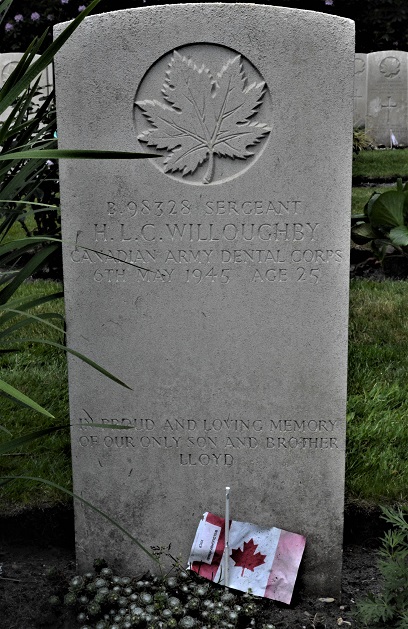
Death came to every branch of the military. This is the grave of a Royal Canadian Army Dental Corps soldier.
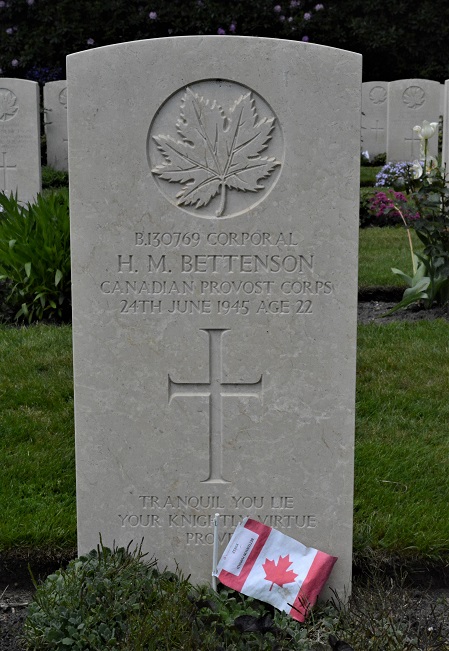
A soldier of the Canadian Military Police. I don’t know how he died. Perhaps shot or bombed while directing traffic at an intersection.
Pte Ken Buchanan
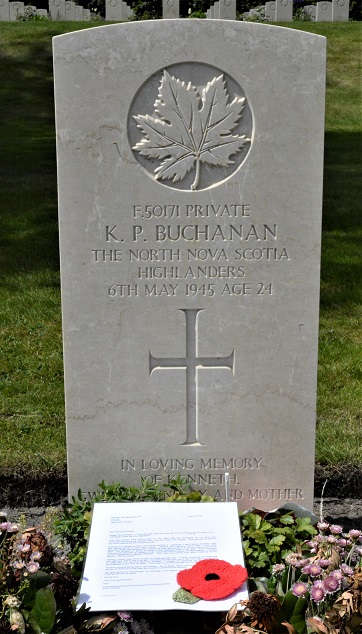
A soldier of the North Nova Scotia Highlanders. Someone put a letter on his grave. It is a copy of this soldier’s last letter to his wife. See next photo.
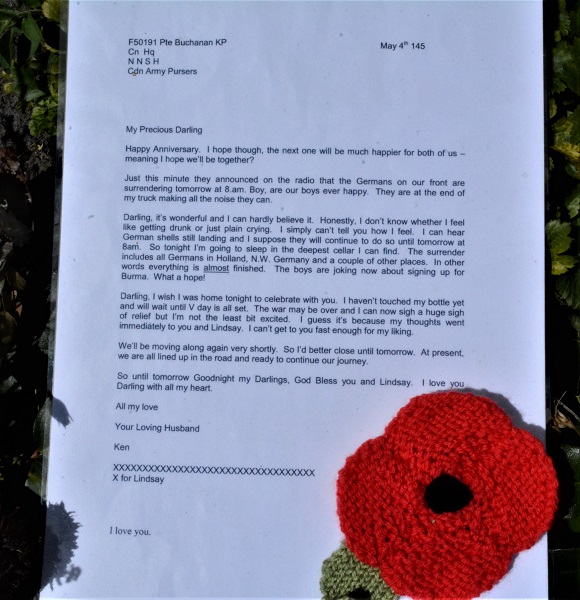
If you have trouble reading the letter, here is the text:
My Precious Darling,
Happy Anniversary. I hope that the next one will be much happier for both of us – meaning I hope we will be together?
Just this minute they announced on the radio that the Germans on our front are surrendering tomorrow at 8 a.m. Boy, are our boys ever happy. They are at the end my truck making all the noise they can.
Darling, it is wonderful and I can hardly believe it. Honestly, I don’t know whether I feel like getting drunk or just plain crying. I simply can’t tell you how I feel. I can hear German shells still landing and I suppose they will continue to do so until tomorrow at 8 a.m. So tonight I am going to sleep in the deepest cellar I can find. The surrender includes all Germans in Holland, N.W. Germany and a couple of other places. In other words everything is almost finished. The boys are joking now about signing up for Burma. What a hope!
Darling, I wish I was home tonight to celebrate with you. I haven’t touched my bottle yet and will wait until V day is all set. This may be over and I can sigh a huge sigh of relief but I’m not the least bit excited. I guess it’s because my thoughts went immediately to you and Lindsay. I can’t get to you fast enough for my liking.
We’ll be moving along again very shortly. So I’d better close until tomorrow. At present, we are all lined up in the road and ready to continue our journey.
So until tomorrow Goodnight my Darlings. God bless you and Lindsay. I love you Darling with all my heart.
All my love. Your loving husband. Ken. xxxxxxxxxxxxx x for Lindsay. I love you.
The letter was written on the 4th of May 1945. Private Buchanan was killed on the 6th, and the war ended on the 8th.
The Brewsters
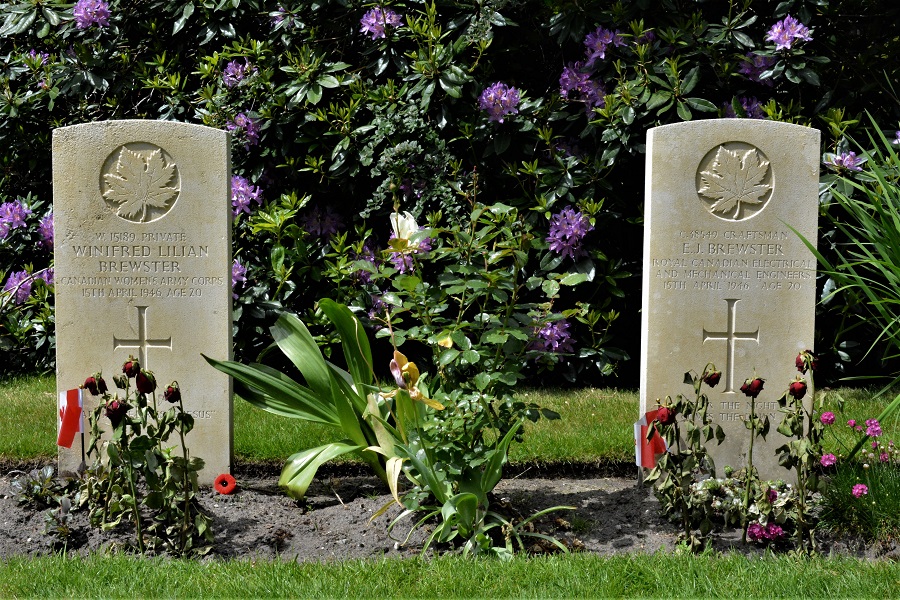
The Holten cemetery contains the grave of the only female soldier killed in Europe that I know of. She was a member of the Canadian Women’s Army Corps. She met Craftsman Brewster of the Royal Canadian Electrical and Mechanical Engineers during the war. At the war’s end, they travelled to London to be married. They decided to return to Europe to be members of the occupying forces in Germany. A few months later, they were both killed in a traffic accident. They were taken back to the Netherlands and are buried side by side at the Holten cemetery.
The Citizens of Holten
Each year on the 4th of May, the date of Liberation of the Netherlands, the children of the Holten area go to the cemetery and place tulips on each of the graves
As in other towns near a Canadian cemetery, the citizens gather on Christmas Eve to place a candle on every grave.
Getting to Holten from Arnhem is a bit of a hassle. First, take the train to Deventer. Then you need to transfer to another train, but trains to Holten run only once per hour, so that you may have a wait. Once you get to Holten, cross the tracks and go straight on the path away from the town. It is a pleasant 35-minute walk through the forest. There are several turns, but they are all marked with directions to the cemetery (Canadese Begraafplaats in Dutch). Follow the signs to Holten on the way back. Depending on your luck with making connections, this might take most of a day. (I missed the train by a few minutes upon returning from the cemetery. Saw it leaving as I approached the station.)
Lest We Forget – Bringing Them Home
While at the Holten cemetery, I met a man who had embarked on a massive undertaking. He is working on photographing the tombstones of every Canadian soldiered buried in the Netherlands. If the gravestone is dirty, he cleans it before taking a photo.

This will be quite a task. There are about 5,600 Canadian soldiers buried in the Netherlands in 180 cemeteries. He is currently working on Holten, which is close to his home. Later he will add Bergen Op Zoom and Groesbeek and many local and small cemeteries around the country. The project is expected to take up to four years.
Only Holten is on the website so far but others will be added when he gets to them.
You can visit his website here
